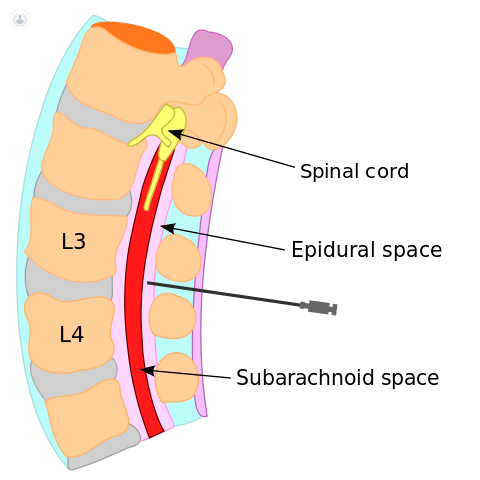Epidurolysis
Dr Yasser Mehrez - Pain medicine
Created on: 01-21-2016
Updated on: 08-24-2023
Edited by: Carlota Pano
What is epidurolysis?
Epidurolysis is an invasive treatment developed by Dr Gabor Racz for managing back pain, and is also known as Racz Catheterisation. It is not widely practised in the UK due to limited clinical evidence for effectiveness and frequent post-operative pain.

Why is epidurolysis performed?
Epidurolysis is performed to treat a range of conditions causing pain in the back, including:
- sciatica
- back injury
- lumbar herniated disc
- epidural scarring caused by bleeding into the epidural space
It is sometimes performed to avoid more invasive treatments, such as spinal surgery.
What happens during epidurolysis?
Epidurolysis involves guiding a catheter into the epidural space using an endoscopic camera. Medications are then injected using this catheter, including steroids. Given that this procedure involves inserting a needle through the skin, pain is managed through intravenous sedation and local anaesthesia.
In some cases, a contrast agent is injected into the epidural space as a diagnostic tool. This is known as epidurography.
After the procedure, you are likely to stay in hospital overnight to receive injections the following day.
What does the exam feel like?
It is normal to feel some pain during the puncture. Other common symptoms that may occur after the examination are a transient lower back pain, pain in the puncture site, and bruising in the area of the sacral hiatus.
Meaning of abnormal results of epidurolysis
If a contrast dye has been administered, it can be used to help diagnose painful back syndromes such as:
